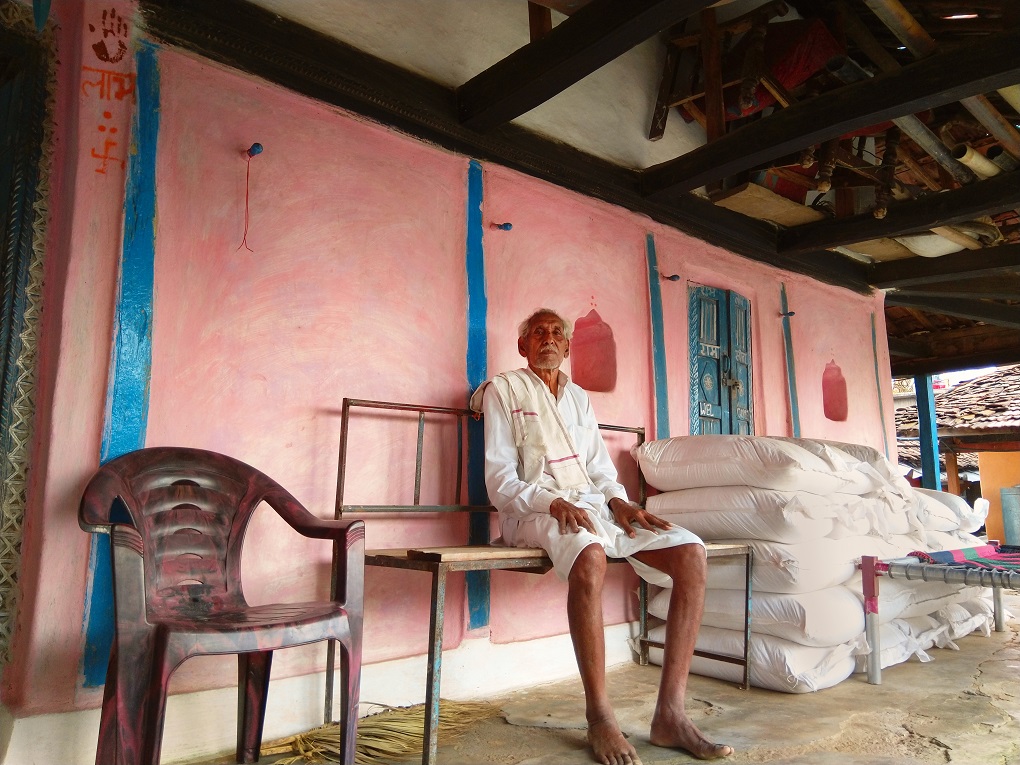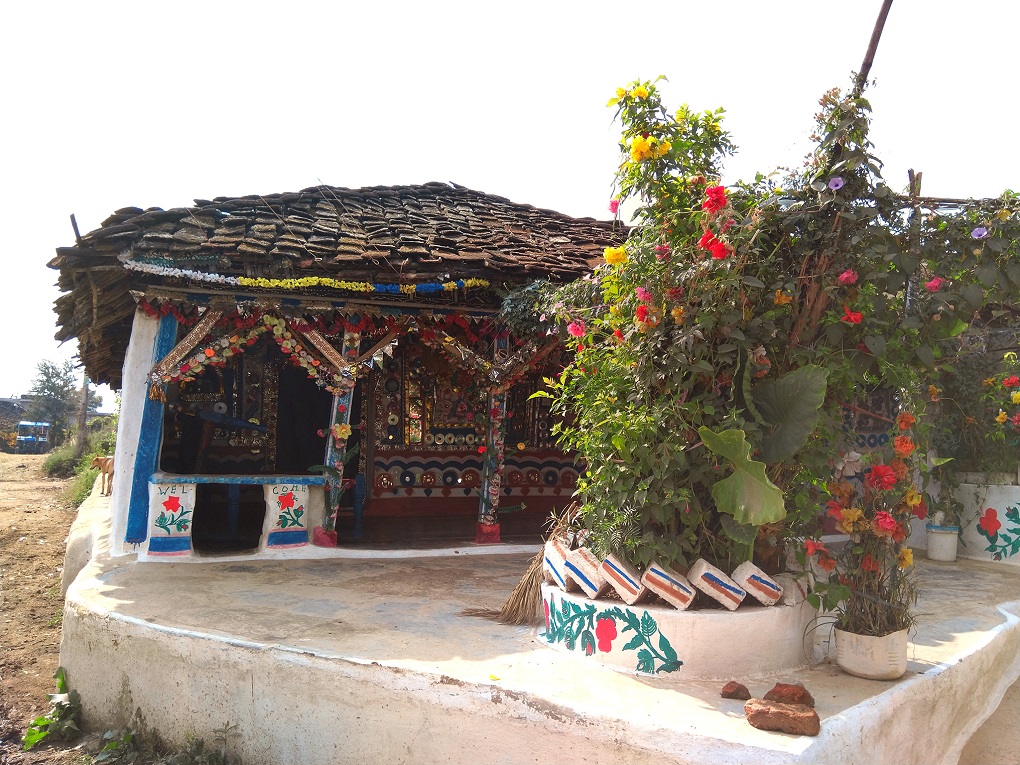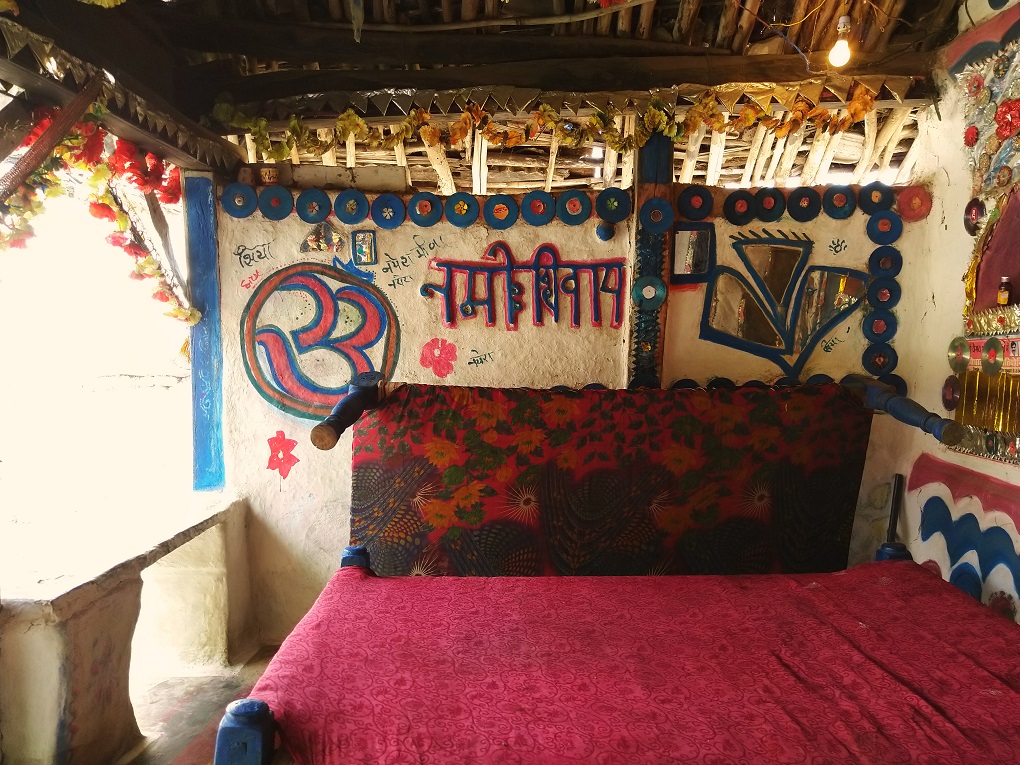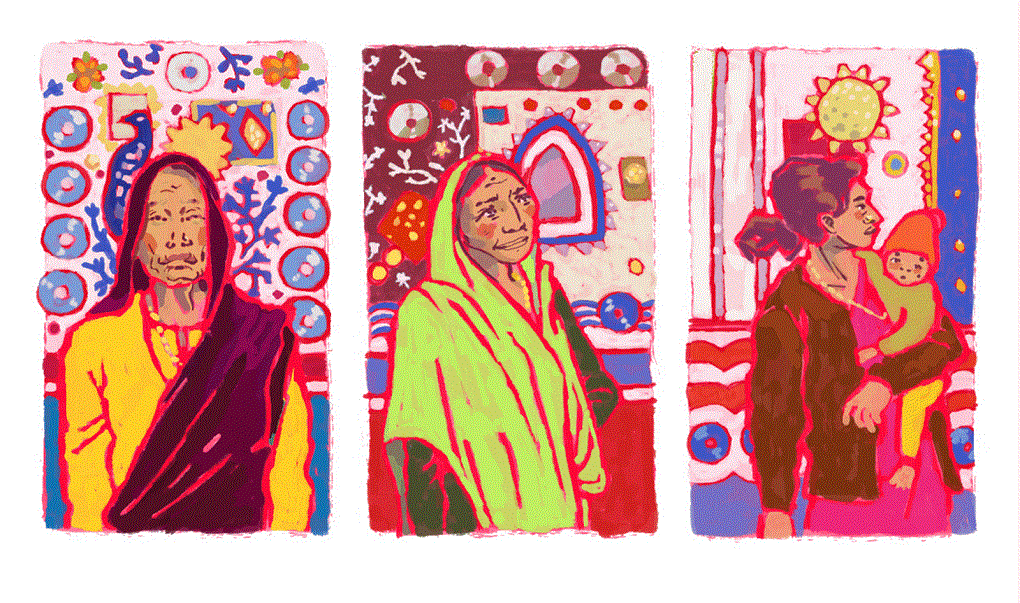There is a house, a singular and rather extraordinary house that sits along the river Betwa. A traditional house inhabited by multiple generations, that has been transformed into a living monument through years of creative labour.
“It started about nine years ago,” she told us, “after my husband died.” Bhoomda Meena, or simply ‘Amma’ as she introduced herself to us, is the elderly woman whose labours have shaped and adorned their traditional style home.
By the time we came to this house, we had been walking for ten days undertaking a walking study of the river Betwa between Ganj Basoda and its source in the Ratapani forest reserve, observing its people, agriculture and natural features. As designers and artists, we were keeping our senses open to the ways in which people made place and expressed themselves in their lives along a river. We were looking out for how the landscape and culture defined the visual, aural and material aesthetics.
Along our way, we found ourselves in Dadrod village in the Raisen district of Madhya Pradesh. As we walked from the river banks through the village, we met Shailendra Meena, who invited us to his home for tea, and introduced us to his father, Motiram Meena, who recounted historical and mythological references to the river Betwa.

As we entered the foyer, an elderly woman approached us from inside, asking us what we wanted. She identified herself only as ‘Amma’ and humbly invited us inside to take in the sights of her home.

As creative professionals ourselves, we were in awe of Amma’s practice. Her meticulous and determined work of nearly a decade on her own home is breath-taking: layer upon layer she works and reworks the interiors of her domestic space, channelling her feelings through a labour of love, and of grief.
She told us how she started creating this art after her husband died. She needed something to fill up her time and make something with his possessions that still remained. While certain kinds of home decorations are prevalent in the region, and she borrows techniques such as mirror work, relief mural etc from tradition her art is quite unique and unlike anything else. The uniqueness comes from the materials she uses, which is a mix of traditional such as mud and lime plaster, and then there is the use of the modern, such as movie CDs.

While CDs are a prominent part of the decorative elements she uses, the materials that she starts with seem to be anything she comes across that has particular aesthetic potential for her: plastic flowers, envelopes, wedding invitations, event posters, DVD cover inserts, rosettes, tinsel, bits of card, mirror, metal scraps among much more. It was a masterclass in upcycling. While some motifs indicate the river by which she lives – flowers, plants and birds – but in its own way the lack of a specific theme is like the river itself, taking on the details from the places it flows through, the natural and manmade.

The houses in that region have a distinctive aesthetic: organic shapes where form and functionality combine. Courtyards, steps and tulsi planters all seemed to sprout from the ground. These features are made from stone and mud plaster and the softened edges are painted with lime in a manner that emphasises their contours.
Like everything in India, homes too have their own typical decoration. Walls are adorned with murals, painted with diwali greetings, or simply the names of the inhabitants. Doors are inscribed with government surveyor’s identifying marks or various religious symbols; wooden rafters, beams and pillars in older houses are often carved with intricate repeating patterns. But this was unlike any of those we had encountered so far. Conspicuous and bejewelled like a tree in bloom, Amma’s house was a mesmerising tribute to a departed loved one.

Her granddaughter- in-law who was also present remarked how she is not very happy with their present house. She wants to move to a pukka house (made with cement), but Amma is opposed to leaving this house. Amma is understandably attached to this house, the marks of her life’s work are visibly embedded in the physical structures of their home. She wants to continue making and decorating this house.
While on our walk, we encountered many villages where toilets were scarce. Swachh Bharat toilets we were told, were facilitated for politically connected families whereas open defecation was the recurring norm for most families. Amma’s daughter is more proud of their large and spotless toilet that was recently built behind the house rather than the decorations in their traditional home. She was excited to show it to us, and urged us to take photographs of everything.
Amma was more indifferent to these external changes. She confided in us that after her son died, she didn’t do anything for three months. She felt sad because she felt she was living in a home where death had happened. Despite the dark times that Amma speaks of, the spirit of her work is a joyous, exuberant release in its intensity and persistence, in how it becomes every available surface without inhibition. Perhaps she sought a catharsis from her griefs through making and inhabiting her creation.
This article has been produced as part of Veditum India Foundation’s Moving Upstream fellowship programme.
![<p>A house decorated with material found by the river Betwa [image by: Kabini Amin]</p>](https://dialogue.earth/content/uploads/2020/05/Betwa-river-art-scaled.jpg)







